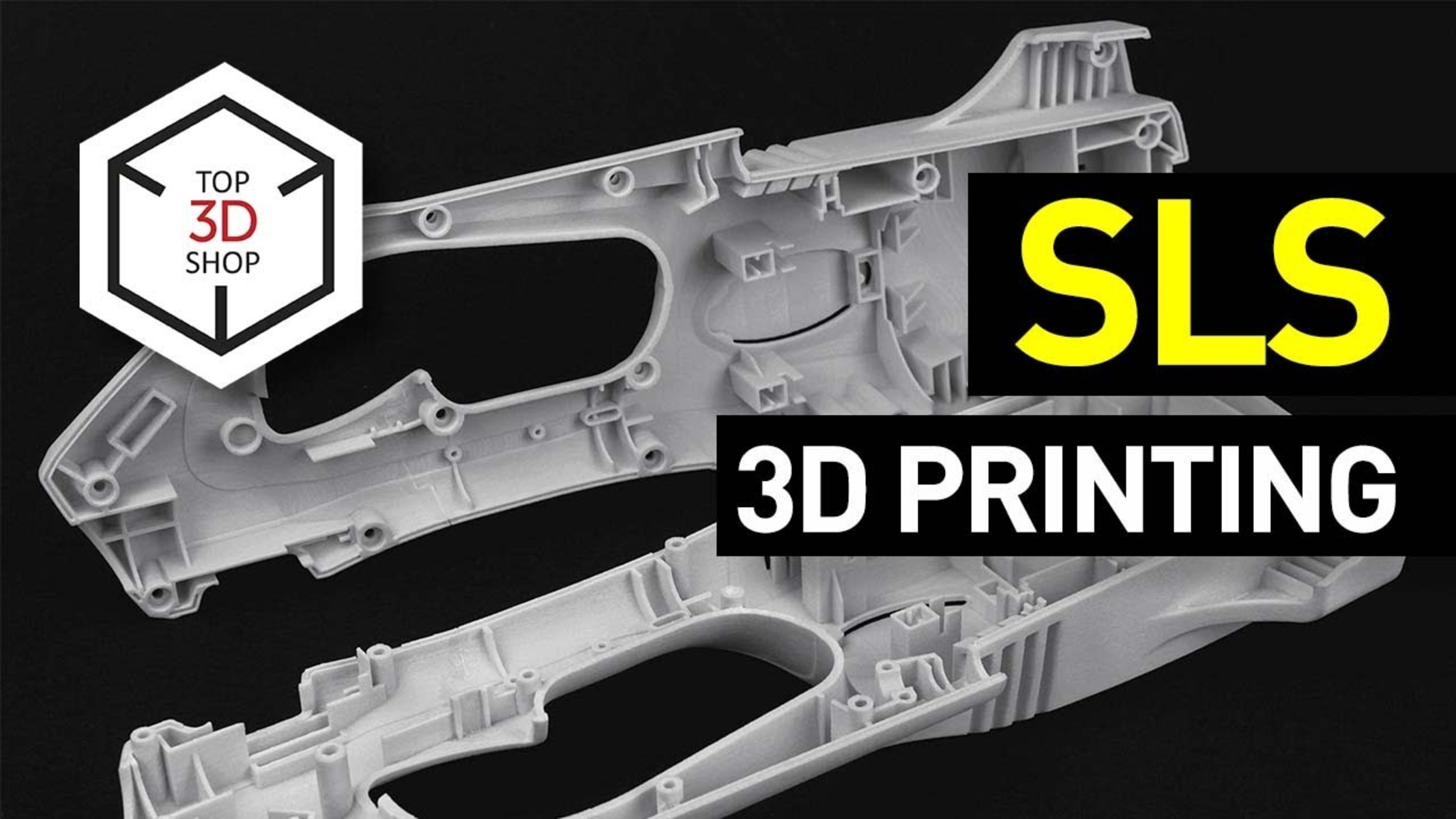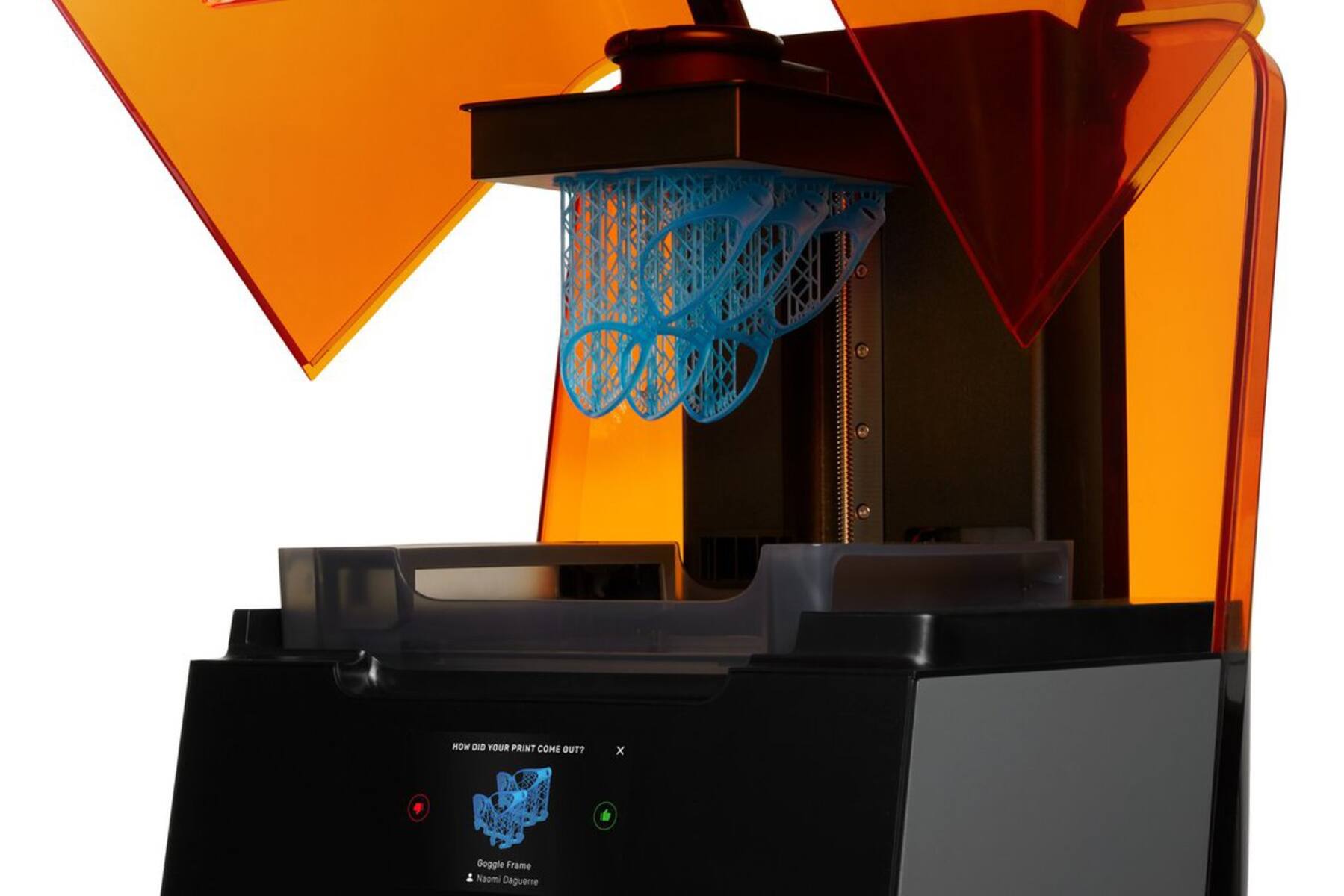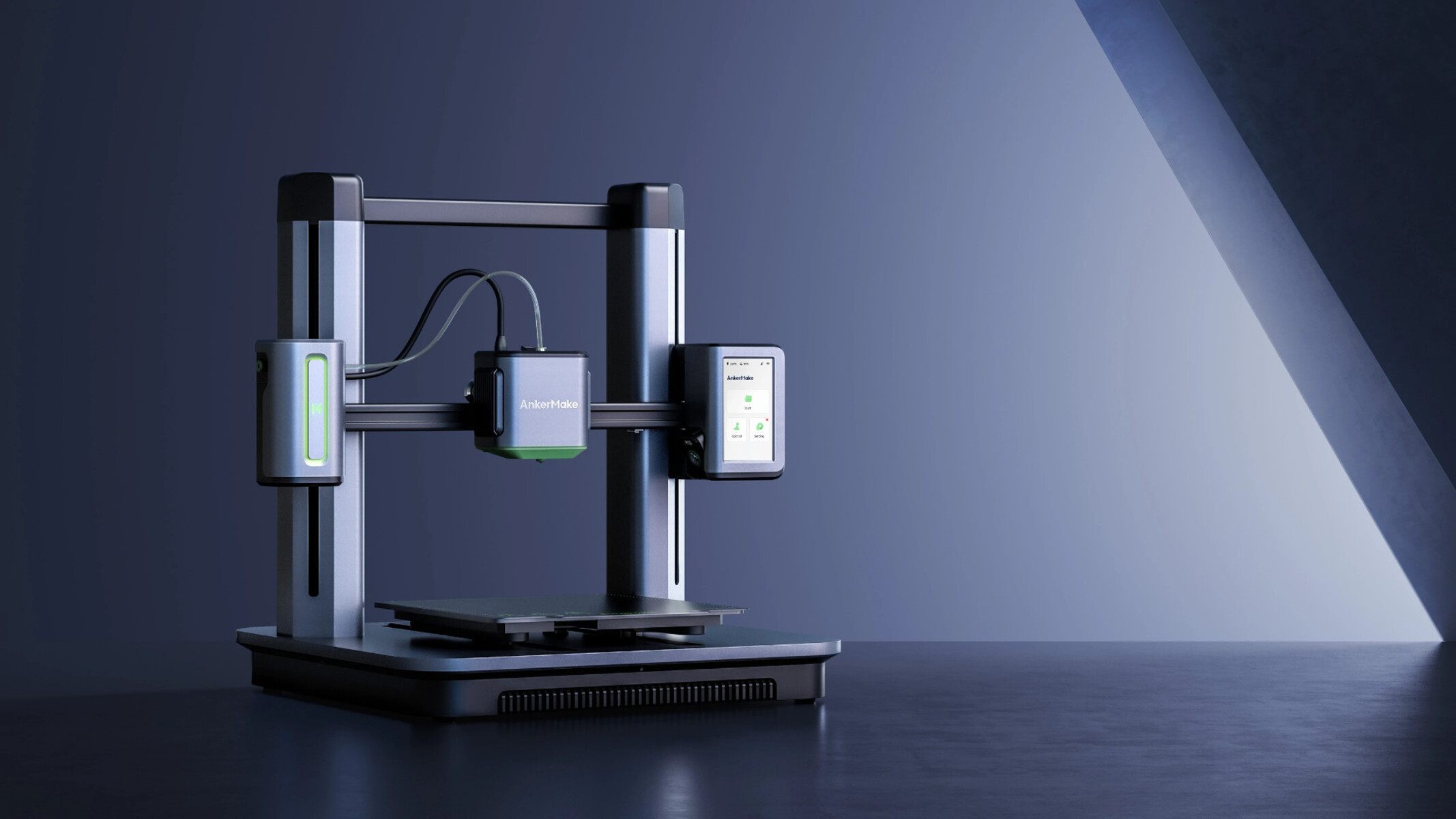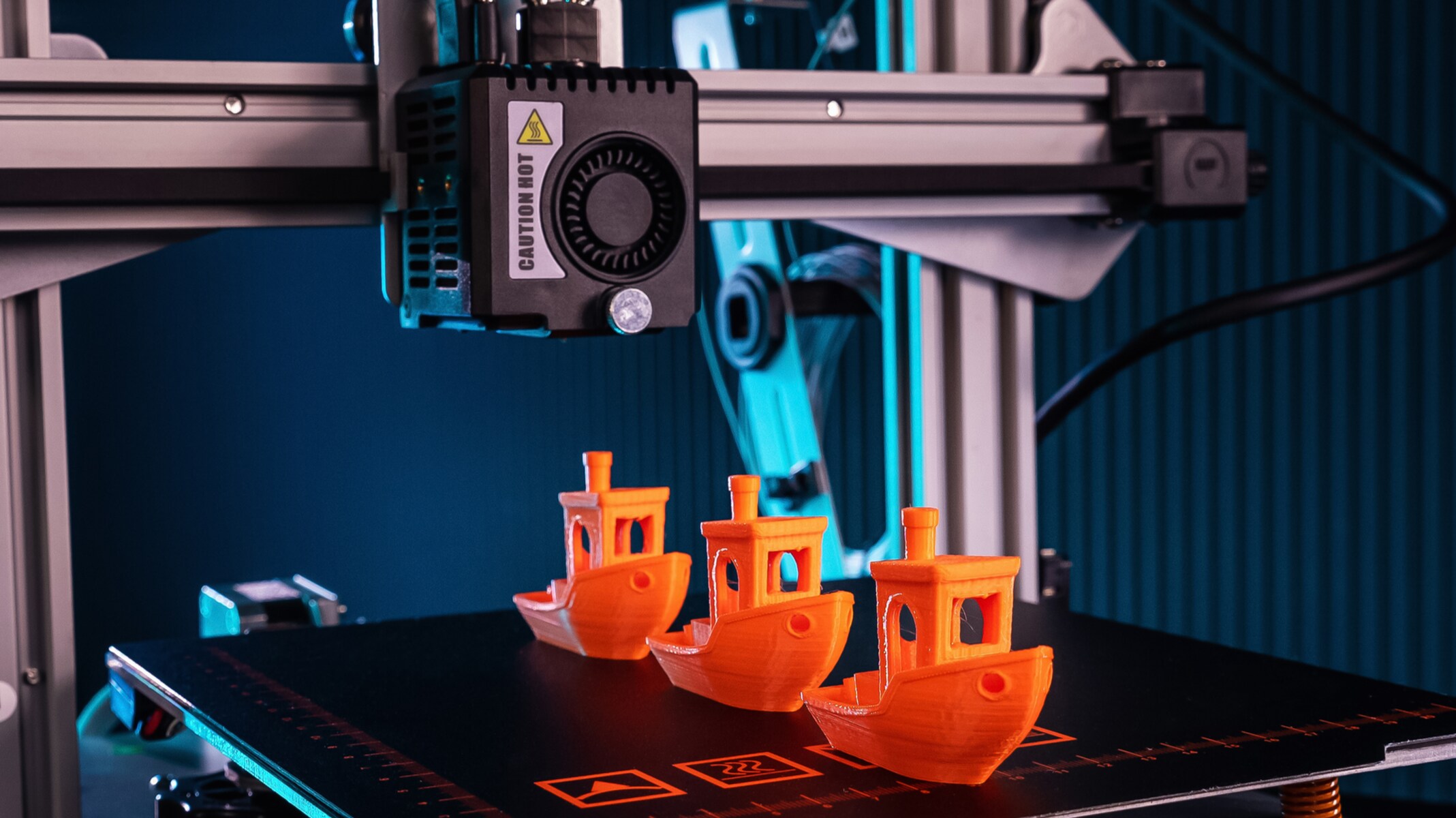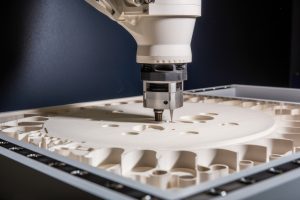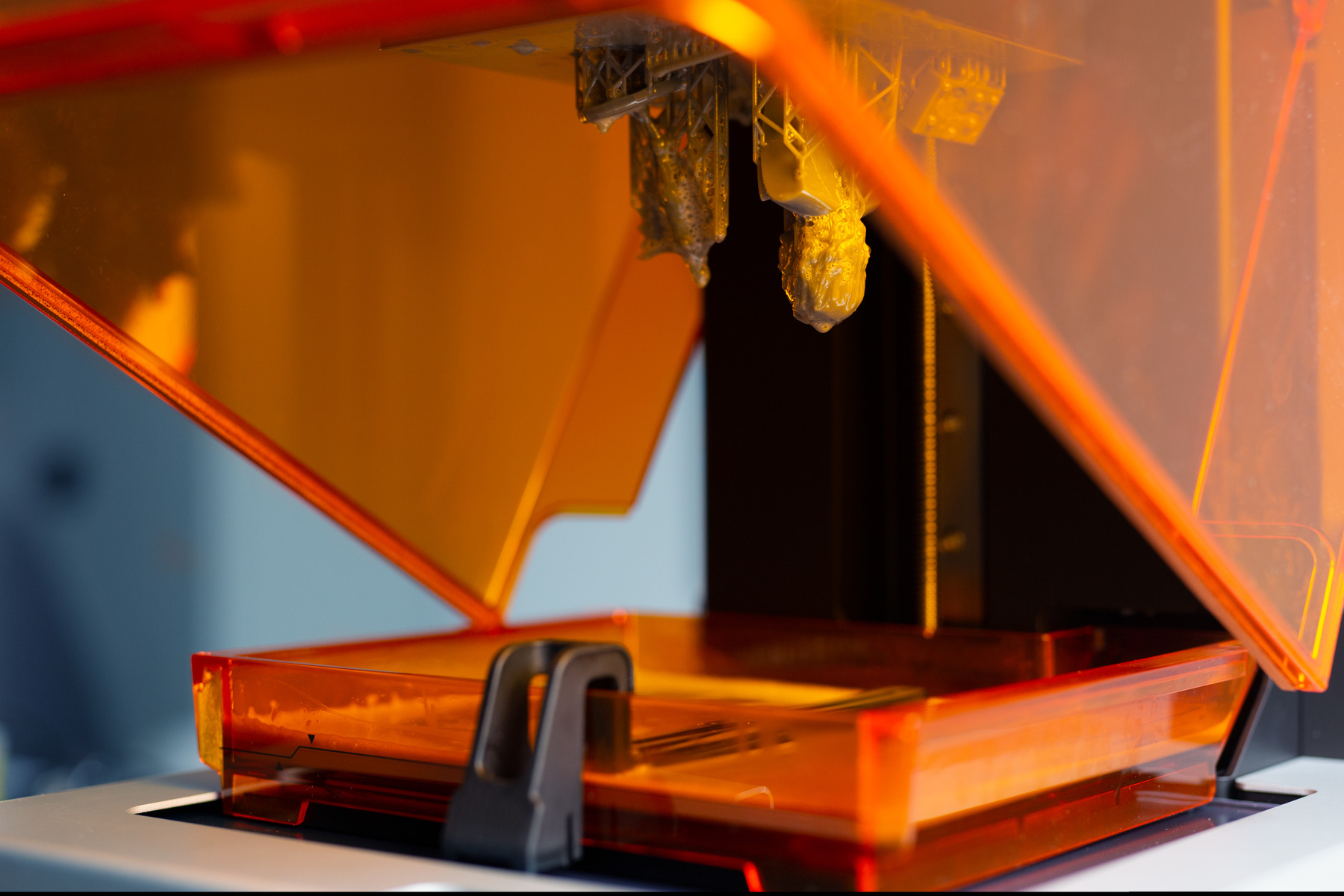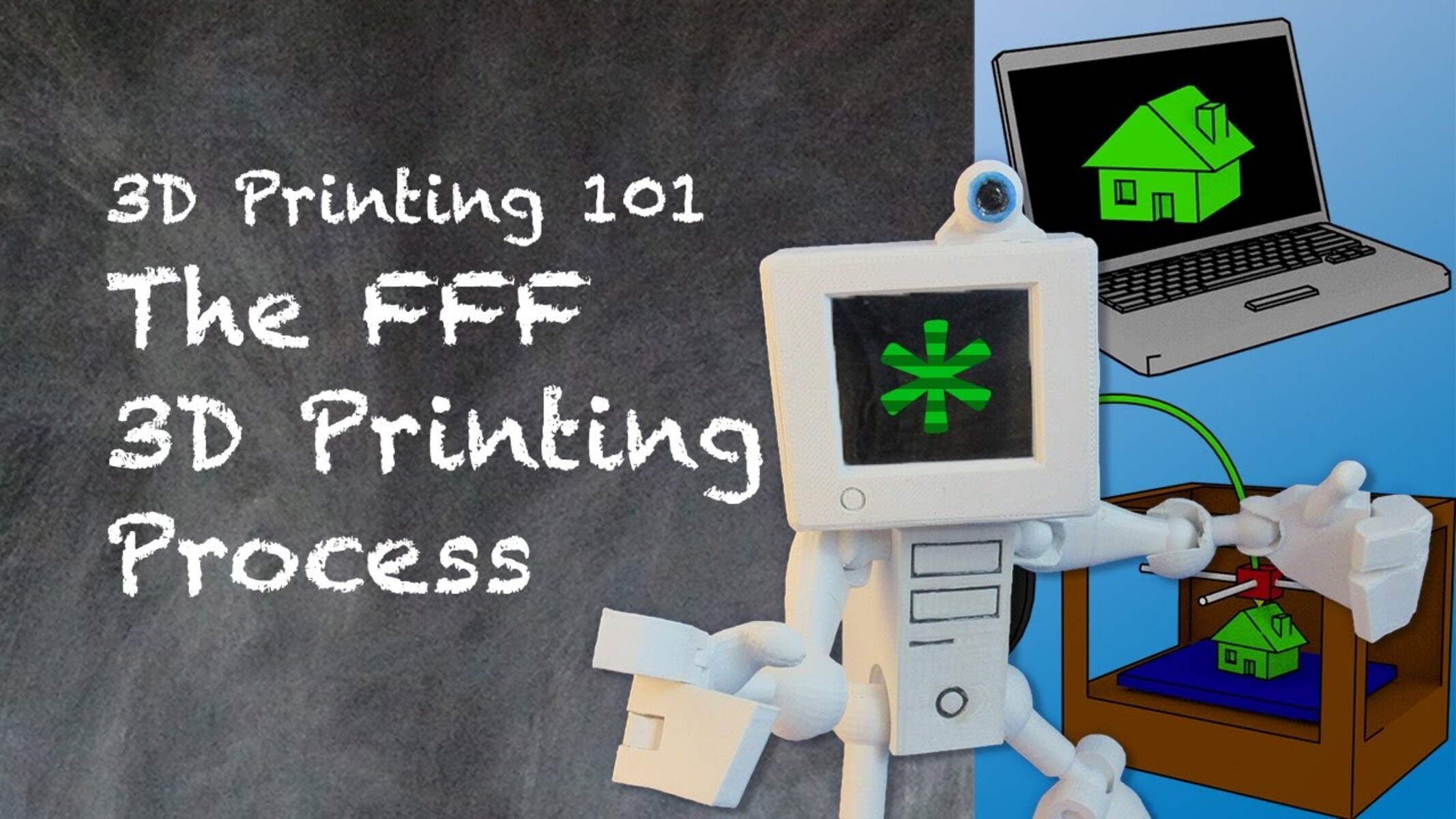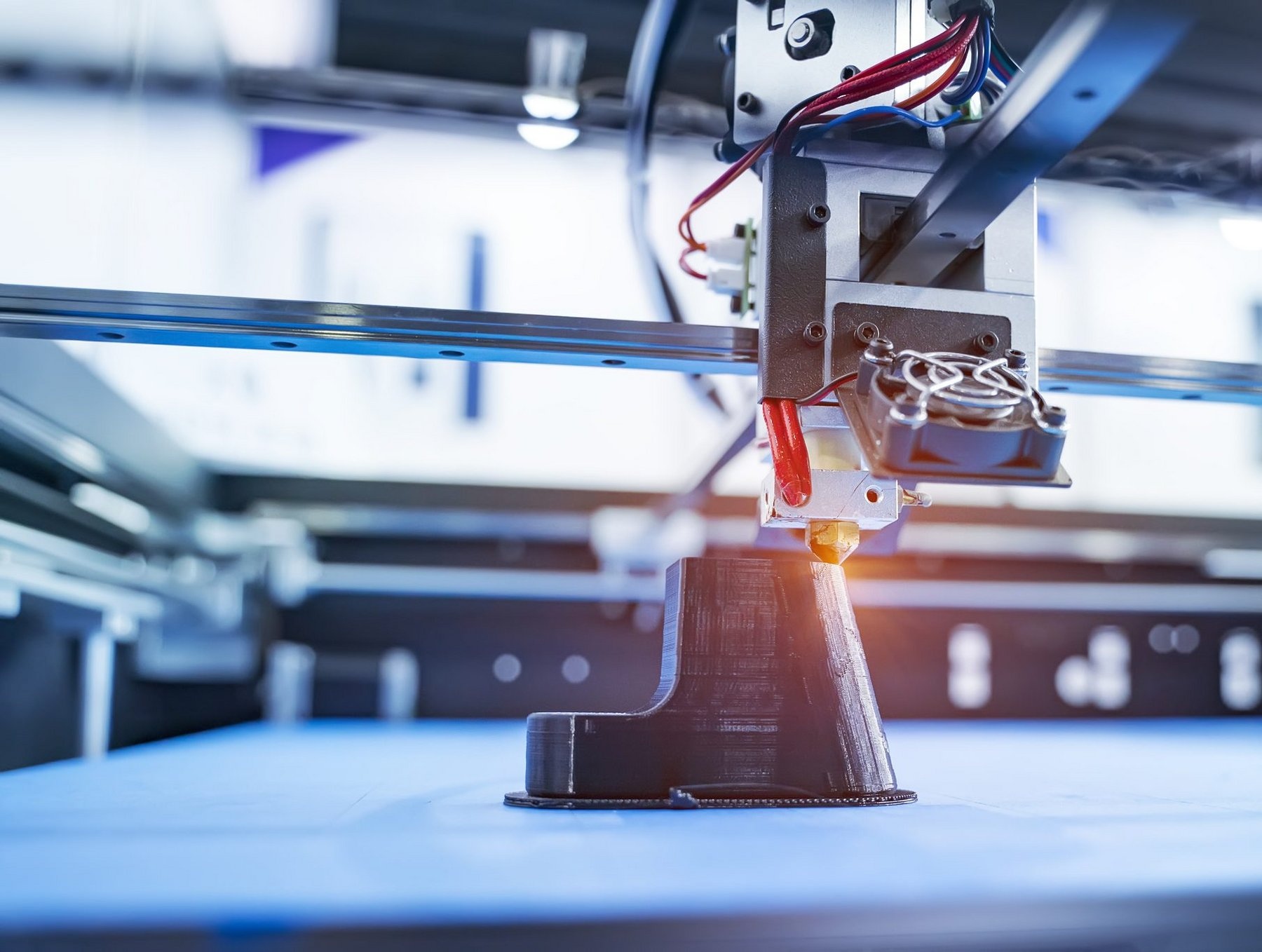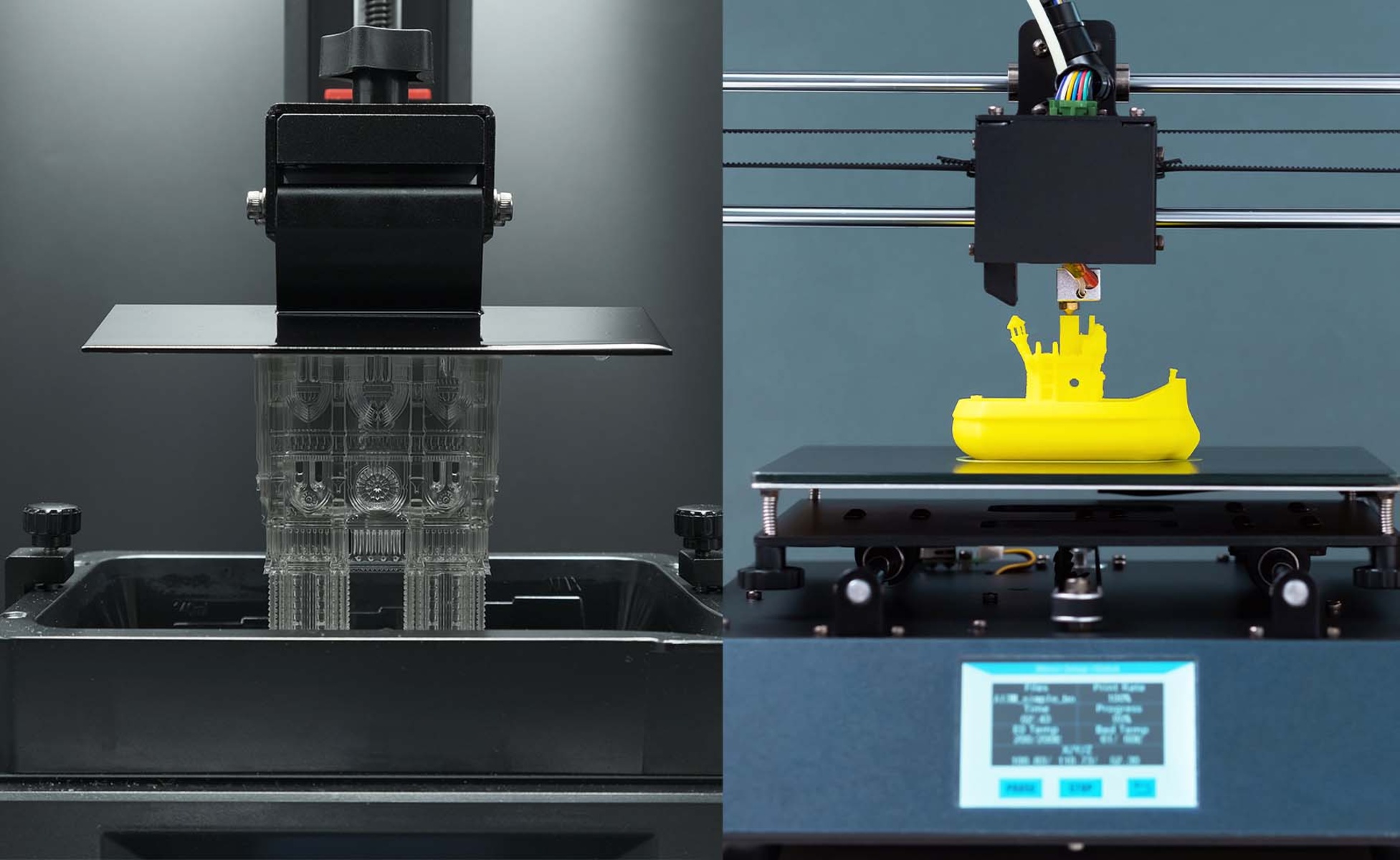Introduction
Welcome to the world of SLS 3D printing, a revolutionary technology that is changing the way we manufacture and create. SLS, which stands for Selective Laser Sintering, is a 3D printing process that offers numerous advantages and opens up a wide range of possibilities for designers, engineers, and manufacturers.
In this article, we will dive deep into the world of SLS 3D printing, exploring its history, how it works, its advantages and limitations, and the applications that benefit from this cutting-edge technology.
SLS 3D printing is gaining popularity for its ability to create complex and functional parts with high precision. Unlike traditional manufacturing methods, which rely on subtractive processes, SLS 3D printing is an additive process that builds objects layer by layer using a powdered material.
One of the main advantages of SLS 3D printing is its versatility. It can work with a wide range of materials, including plastics, metals, and even ceramics, allowing for the creation of parts with varying properties and characteristics.
Not only does SLS 3D printing offer versatility, but it also enables the production of intricate geometries that would be impossible to achieve using traditional manufacturing methods. This opens up a whole new world of design possibilities, allowing engineers to push the boundaries of what is possible.
The rise of SLS 3D printing has also led to significant reductions in costs and production time. With the ability to create complex parts in a single print, manufacturers can streamline their production processes and eliminate the need for costly tooling and molds.
In the following sections, we will explore the history of SLS 3D printing, delve into how it works, examine its advantages, applications, and limitations, and compare it to other 3D printing technologies. By the end of this article, you will have a comprehensive understanding of SLS 3D printing and its potential impact on various industries.
What is SLS 3D Printing?
SLS 3D printing, also known as Selective Laser Sintering, is a revolutionary additive manufacturing technology that uses a high-powered laser to fuse small particles of material together to create 3D objects. Unlike traditional manufacturing methods that involve cutting or drilling away material, SLS 3D printing builds objects layer by layer, making it a highly precise and efficient process.
The key to SLS printing lies in its use of powdered materials. A thin layer of powdered material, typically plastic or metal, is spread evenly across a build platform. The laser then scans the surface of the powder, selectively melting and fusing the particles together according to the digital design. After each layer is complete, a roller or blade sweeps across the surface, leveling the powder for the next layer to be added.
One of the main advantages of SLS 3D printing is its ability to create complex geometries and intricate designs with ease. Unlike other 3D printing technologies, SLS does not require the use of support structures to hold the object in place during printing. The unfused powder surrounding the printed part acts as its own support structure, allowing for the creation of intricate and delicate structures that would be difficult or impossible to achieve with traditional manufacturing methods.
SLS 3D printing also offers a wide range of material options. The powder materials used in SLS printing can range from polymers like nylon and polyamide to metals like stainless steel and titanium. This versatility allows for the production of parts with varying mechanical properties, heat resistance, and chemical resistance, making it suitable for a wide range of applications.
Furthermore, SLS 3D printing can produce functional and durable parts. The fused particles create strong and solid objects, making them suitable for use in prototypes, end-use parts, tooling, and even high-performance components for aerospace and automotive industries.
Overall, SLS 3D printing is a game-changer in the world of additive manufacturing. Its ability to create complex geometries, its material versatility, and its production of functional and durable parts make it a preferred choice for various industries. As we delve further into the world of SLS 3D printing, we will discover its history, working principles, advantages, and limitations, as well as its applications in different fields.
The History of SLS 3D Printing
The roots of SLS 3D printing can be traced back to the 1980s when Dr. Carl Deckard, a student at the University of Texas at Austin, developed a new additive manufacturing process called Selective Laser Sintering. Working alongside his advisor, Dr. Joe Beaman, Deckard laid the foundation for what would become one of the most significant advancements in 3D printing technology.
Deckard’s breakthrough came in 1984 when he filed a patent for the Selective Laser Sintering (SLS) process. This process involved using a high-powered laser to selectively fuse particles of powdered material together, layer by layer, based on a digital model. The unfused powder surrounding the solidified part acted as its own support structure, eliminating the need for additional support materials.
Dr. Carl Deckard and Dr. Joe Beaman went on to establish the company DTM Corporation (now a part of 3D Systems), which commercialized the SLS technology in the late 1980s. This marked the beginning of a new era in 3D printing, as SLS became the first widely available 3D printing technology that could produce functional and complex parts.
Over the years, SLS 3D printing has continued to evolve and advance. The materials available for use in SLS have expanded to include a wide range of polymers and metals. This has opened up new possibilities for creating parts with diverse properties and characteristics.
In recent years, advancements in SLS technology have focused on improving the quality and speed of printing. New laser systems, more advanced powder materials, and enhanced software have all contributed to faster and more precise printing processes.
Today, SLS 3D printing is widely used in industries such as aerospace, automotive, healthcare, and consumer goods. Its ability to create fully functional and durable parts with complex geometries has made it a preferred choice for prototyping, production, and even customization.
Looking to the future, the advancements in SLS 3D printing are expected to continue. Researchers and engineers are exploring new materials, improving post-processing techniques, and developing innovative applications for this technology. As a result, SLS 3D printing is set to play a crucial role in the advancement of manufacturing and design.
How Does SLS 3D Printing Work?
SLS 3D printing operates on the principle of selective laser sintering, where small particles of material are fused together to create a three-dimensional object. The process involves several key steps:
Preparation: The first step in SLS 3D printing is preparing the powdered material. The material, typically a polymer or metal powder, is spread evenly across a build platform. The recommended material is loaded into the printer’s hopper, which feeds the powder into a heated chamber.
Laser Scanning: Once the powdered material is in place, a high-powered laser scans the topmost layer of the powder. The laser selectively fuses the particles together, based on the digital design of the object being printed. The laser’s intensity and speed are carefully controlled to ensure optimal fusion of the particles.
Layer by Layer Building: After the laser has completed scanning a layer, the build platform is lowered, and a new layer of powder is spread across the previous layer. The process is repeated, with the laser scanning and fusing each new layer on top of the previous one. This layer-by-layer approach continues until the entire object is complete.
Heating and Cooling: Throughout the printing process, the build chamber’s temperature is carefully controlled. The heat from the laser causes the powder particles to fuse together, creating a solid object. Once the printing is finished, the object is allowed to cool inside the chamber before it is removed.
Removing Unfused Powder: After the object has cooled, the excess, unfused powder is carefully removed. This leftover powder can be recycled and reused for future prints, reducing waste and material costs.
SLS 3D printing offers several advantages over other 3D printing technologies. One of the key benefits is the lack of the need for support structures. The unfused powder surrounding the printed object acts as its own support, allowing for the creation of complex geometries and intricate designs without the need for additional support materials.
Furthermore, SLS can work with a wide range of materials, including plastics, metals, and ceramics. This versatility opens up numerous opportunities for various industries and applications.
Overall, SLS 3D printing is an additive manufacturing process that utilizes a high-powered laser to selectively fuse powdered materials together, layer by layer. Through its precise and versatile nature, SLS 3D printing is revolutionizing the manufacturing world by allowing for the creation of complex and functional objects with ease.
Advantages of SLS 3D Printing
SLS 3D printing offers a wide range of advantages that make it a preferred choice for various industries. Let’s explore some of the key benefits that this additive manufacturing technology provides:
1. Versatile Material Options: SLS 3D printing works with a variety of materials, including plastics, metals, and ceramics. This versatility allows for the creation of parts with different mechanical, thermal, and chemical properties, expanding the applications across multiple industries.
2. Complex and Intricate Designs: SLS 3D printing excels in producing complex geometries and intricate designs with ease. The technique does not require support structures, as the unfused powder surrounding the printed object acts as its own support. This enables the creation of intricate details, such as internal cavities, overhangs, and organic shapes.
3. Faster Production Time: SLS 3D printing can produce multiple parts simultaneously in a single print job. This feature, known as batch printing, significantly reduces the time required for production and allows for quicker turnaround times compared to traditional manufacturing methods.
4. Cost-Effective Manufacturing: SLS 3D printing eliminates the need for expensive tooling and molds, reducing upfront costs. It is a cost-effective solution, especially for low-volume production runs, as it does not require minimum order quantities. Additionally, the ability to print multiple parts together optimizes material usage and minimizes waste.
5. Functional and Durable Parts: SLS 3D printing produces parts that are not only visually appealing but also functional and durable. The fused particles form a solid and robust structure, making the printed objects suitable for functional prototypes, end-use parts, and even demanding applications in industries such as aerospace and automotive.
6. Design Freedom: With SLS 3D printing, designers have greater freedom when it comes to geometric complexity. This opens up a world of possibilities for creating customized and personalized products, allowing for innovative designs that were previously unachievable with traditional manufacturing methods.
7. Reduced Assembly Requirements: SLS 3D printing enables the production of complex, multi-part assemblies as a single print job. This eliminates the need for assembly processes and reduces the risk of errors and inconsistencies that can occur during manual assembly.
8. Improved Product Iterations: SLS 3D printing reduces the time and cost associated with design iterations. Design modifications can be easily implemented and printed within a short time frame, accelerating the product development process and allowing for rapid prototyping and validation.
These advantages of SLS 3D printing have made it a game-changer in the manufacturing industry. From its material versatility to its ability to produce complex designs and functional parts, SLS 3D printing offers numerous benefits that continue to revolutionize the way products are designed, prototyped, and manufactured.
Applications of SLS 3D Printing
SLS 3D printing has found wide-ranging applications across various industries, thanks to its ability to produce complex geometries, functional parts, and durable prototypes. Let’s explore some of the key applications where SLS 3D printing is making a significant impact:
1. Aerospace and Defense: SLS 3D printing is revolutionizing the aerospace and defense industry by enabling the production of lightweight, yet highly durable parts. It is used for manufacturing complex components, such as engine parts, air ducts, brackets, and prototypes for both military and civilian aircraft.
2. Automotive: SLS 3D printing is changing the automotive industry by enhancing the design and development process. It is used for rapid prototyping, producing functional parts for concept cars, creating custom interior components, and optimizing designs for improved performance.
3. Healthcare: In the healthcare sector, SLS 3D printing is utilized for the production of medical devices, prosthetics, orthotics, and anatomical models. The ability to create patient-specific, custom-fit solutions makes SLS 3D printing invaluable in creating personalized healthcare products.
4. Consumer Goods: SLS 3D printing allows for the creation of intricate and customizable consumer products. From jewelry and fashion accessories to electronic components and household items, SLS 3D printing enables the production of unique and personalized products that cater to individual preferences.
5. Industrial Manufacturing: SLS 3D printing is used in industrial manufacturing to produce functional end-use parts for machinery, tools, and equipment. With the ability to withstand harsh operating conditions, SLS-printed components are increasingly replacing traditional manufacturing methods in industries that require high-performance parts.
6. Architecture and Design: SLS 3D printing is utilized in architecture and design to create intricate models, prototypes, and scale models of buildings. It allows architects and designers to visualize their designs more effectively and test different iterations before moving forward with construction.
7. Education and Research: SLS 3D printing plays a crucial role in education and research institutions. It enables students, researchers, and scientists to create prototypes, models, and functional objects for experiments and demonstrations, fostering innovation and advancing various fields of study.
8. Tooling and Manufacturing Aids: SLS 3D printing is used for the production of custom jigs, fixtures, molds, and manufacturing aids. These tools help streamline production processes, improve accuracy, reduce costs, and increase productivity in various manufacturing industries.
These are just a few examples of the wide-ranging applications where SLS 3D printing is making significant advancements. As the technology continues to evolve and material options expand, we can expect to see SLS 3D printing being adopted across even more industries and playing a key role in the manufacturing landscape.
Comparison of SLS 3D Printing with Other 3D Printing Technologies
While SLS 3D printing has its own unique advantages and capabilities, it is essential to understand how it compares to other 3D printing technologies. Let’s explore a comparison between SLS and some of the other commonly used 3D printing technologies:
Fused Deposition Modeling (FDM): FDM is one of the most widely adopted 3D printing technologies. Unlike SLS, which uses powdered materials, FDM employs a filament of thermoplastic material. FDM is more suitable for rapid prototyping, concept models, and low-cost production due to its lower cost of equipment and material. However, it may not offer the same level of intricacy and precision as SLS 3D printing.
Stereolithography (SLA): SLA uses a liquid photopolymer resin that is selectively cured by a laser to create 3D objects. Compared to SLS, SLA offers higher resolution and surface finish for intricate models and detailed parts. However, it is limited in terms of material options and may not be as suitable for functional parts or large-scale production.
Digital Light Processing (DLP): DLP is similar to SLA and also utilizes liquid resin that is cured by projected light. The main difference is that DLP uses a digital light projector, which can cure an entire layer at once, resulting in faster printing speeds compared to SLA. However, DLP may have limitations in terms of build volume and resolution compared to SLS 3D printing.
Selective Laser Melting (SLM): SLM is a metal 3D printing technology that uses a high-powered laser to selectively melt and fuse metal powders to create solid, fully dense metal parts. While SLS can work with certain metal powders, SLM offers a higher level of accuracy, resolution, and material integrity for metal applications. SLM is commonly used in aerospace, automotive, and medical industries for producing complex and high-strength metal parts.
Direct Metal Laser Sintering (DMLS): DMLS is another metal 3D printing technology that is similar to SLS. It selectively fuses metal powder using a laser, but unlike SLS, DMLS achieves full melting of the metal particles, resulting in dense metal parts with high accuracy and excellent mechanical properties. DMLS is commonly used for complex metal components in industries such as aerospace, medical, and automotive.
When considering which 3D printing technology to use, it is important to evaluate the specific requirements of the project, including material properties, part complexity, resolution, production volume, and cost. While SLS 3D printing offers versatility, complex geometries, and functional parts, other technologies may be more suitable depending on the specific needs of the application.
By understanding the differences and strengths of each 3D printing technology, individuals and businesses can make informed decisions about which technology aligns best with their requirements and objectives.
Limitations of SLS 3D Printing
While SLS 3D printing offers numerous advantages, it also has a few limitations that should be taken into consideration. Let’s explore some of the key limitations of SLS 3D printing:
1. Surface Finish: The surface finish of parts produced through SLS 3D printing may not be as smooth as those produced by other technologies such as stereolithography (SLA) or digital light processing (DLP). Post-processing techniques like sanding or polishing may be required to achieve a desired surface finish.
2. Material Limitations: Although SLS 3D printing offers a wide range of material options, the availability of certain materials may be limited compared to other technologies. Some highly specialized materials, such as high-temperature polymers or specific metal alloys, may not be compatible with SLS printing due to the required printing parameters or the properties of the powder materials.
3. Support Structures: While SLS 3D printing eliminates the need for traditional support structures, the unfused powder surrounding the printed object still acts as a support. This can result in the need for additional manual or automated post-processing steps to remove excess powder from enclosed or intricate internal cavities. However, advancements in post-processing techniques are helping to mitigate this limitation.
4. Equipment Cost: SLS 3D printers, particularly those capable of handling high-temperature materials or large build volumes, can be costly compared to other 3D printing technologies. The initial investment in the equipment may be a limiting factor for small businesses or individuals with budget constraints.
5. Part Consolidation: While SLS 3D printing allows for the production of complex parts, it may not be ideal for consolidating multiple components into a single print. Assembly or integration of separately printed parts may still be required, which can be time-consuming and may affect overall design and functionality.
6. Powdery Residue: SLS 3D printing can generate fine powder residue during the printing process, which needs to be carefully handled due to potential health and safety considerations. Proper precautions should be taken to ensure the safe handling, storage, and disposal of unused or post-printing powder.
7. Dimensional Accuracy: Achieving high dimensional accuracy in SLS 3D printing can be a challenge due to factors such as thermal expansion and shrinkage during the printing and cooling process. To mitigate this limitation, proper calibration, machine optimization, and post-printing adjustments may be required.
It is important to note that the limitations of SLS 3D printing are continually being addressed through research, development, and advancements in technology. With ongoing improvements, such as higher resolution, increased material options, and improved post-processing techniques, the limitations of SLS 3D printing are gradually being overcome.
By understanding these limitations and working within the constraints, designers and manufacturers can make informed decisions to leverage the strengths and capabilities of SLS 3D printing while finding alternative solutions when necessary.
Conclusion
In conclusion, SLS 3D printing, or Selective Laser Sintering, is a versatile and groundbreaking additive manufacturing technology. With its ability to create complex geometries, produce functional and durable parts, and work with a variety of materials, SLS 3D printing is transforming the way we design, manufacture, and innovate.
Throughout this article, we have explored the history of SLS 3D printing, its working principles, advantages, limitations, and applications across various industries. We have seen how SLS 3D printing offers intricate designs, faster production times, cost-effective manufacturing, and the freedom to create unique and personalized products. By eliminating the need for support structures and providing a wide range of material options, SLS 3D printing has become a go-to technology for numerous industries, including aerospace, automotive, healthcare, and consumer goods.
While SLS 3D printing has its limitations, such as surface finish challenges and the need for comprehensive post-processing, ongoing advancements are being made to overcome these limitations. Researchers and engineers are continually pushing the boundaries of SLS technology, exploring new materials, improving resolution, and refining the printing process.
As the technology continues to evolve, SLS 3D printing is poised to play a significant role in the future of manufacturing, design, and customization. It offers endless possibilities for innovation, enabling the production of complex and functional parts with unparalleled accuracy and efficiency.
Whether it’s in aerospace, automotive, healthcare, or consumer goods, SLS 3D printing is revolutionizing the way we create and manufacture. With its ability to turn digital designs into physical objects, SLS 3D printing is empowering designers, engineers, and manufacturers to push boundaries, unlock new opportunities, and shape the future of manufacturing.







